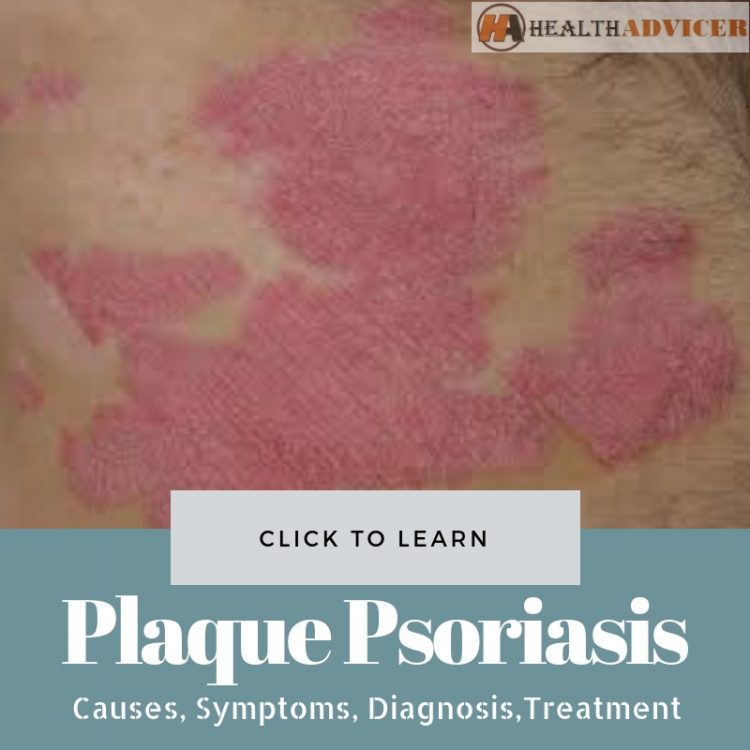Plaque psoriasis is a common type of skin disease that affects many people across the globe. The type of skin disorder causes the skin cells to multiply ten times faster than normal. So, the condition can speed up the life cycle of skin cells leading to build up. It can result in bumpy red patches on the surface of the skin. In most cases, the skin cells form scales, which causes itching and pain. The chronic condition has no known cure. You can only opt for treatment to manage the skin cell growth. So, you can manage the symptoms with treatment. The skin disorder can appear anywhere. But, the excess skin cells develop on your lower back, knees, elbows, and scalp. The condition does not pass from one person to another. It does affect people from the same family.
The chronic skin problem can affect you in your early adulthood. In mild cases, the skin buildup only occurs in a few areas of the body. But, people suffering from the severe condition can experience skin problems in large parts of the body. So, the bumpy and scaly skin can cover several parts of the affected person. Remember, the condition has no permanent cure. It can heal and return throughout your life. Therefore, you need to know tips to manage the symptoms of the problem. With some lifestyle measures, the condition can trigger less severe signs. Read ahead to know more about the skin disorder.
What Is Plaque Psoriasis?
Plaque psoriasis is an autoimmune condition leading to excess skin accumulation. It results in patches of red, thick, and scaly skin. When you suffer from a skin disorder, it can speed up the immune system. So, it results in inflammation leading to a large number of cells to grow. In normal cases, your skin cells shed. But, due to the immune problem, the cells pile up on the surface of the skin instead of falling off. So, it results in the condition. The skin disorder can cause itching and pain. So, you can suffer severe distress due to the problem. Apart from the physical discomfort, the condition can also embarrass you. You cannot show expose the skin surface affected by the problem due to the fear of humiliation.
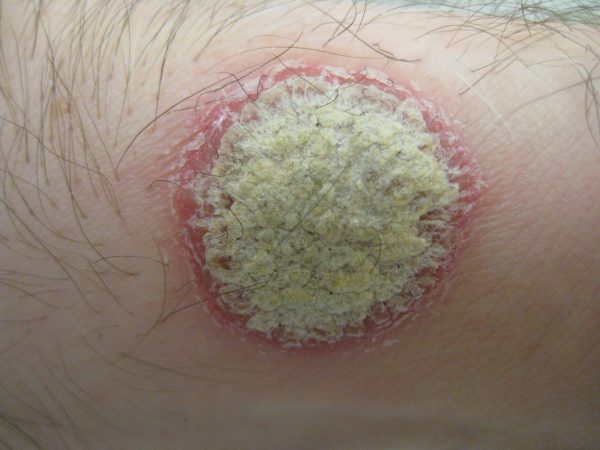
The condition can result in the development of rough and silvery-white scale. The immune system problem causes your skin cells to receive signals for producing new skin cells quickly. It leads to the building of skin cells causing patches. But, many times, you can misdiagnose the problem as other skin conditions like eczema or dermatitis. Therefore, the condition does not respond to treatment option aimed to cure other skin problems.
Severity Of Plaque Psoriasis
Depending on the symptoms you suffer, you can classify the severity of the skin problem into three types. Your doctor can perform a thorough physical assessment to determine the complication caused by the skin problem. So, based on how much your body suffers due to the symptoms, you can classify it as:
Mild Plaque Psoriasis
As the name suggests, the skin disorder covers only a small percentage (less than 3%) of your body. The condition does not require intensive therapy or treatment. You can manage it with simple steps.
Moderate Plaque Psoriasis
The skin disorder causing the red, thick, and scaly skin to cover 3% to 10% of your body can come under the moderate classification.
Severe Plaque Psoriasis
The severe form of skin disorder, which covers more than ten percent of the body.
The severity of the problem is also determined by the impact of skin disorder in everyday life.
Signs/Symptoms Associated With Plaque Psoriasis
In most cases, the condition can cause changes in your skin appearance. You can see the following signs on your skin:
- Pink plaque with well-defined edges on your skin
- Itching
- Bleeding/cracking of affected skin
- Heavy silver-colored/white scales covering the plaque surface
- Plaque psoriasis can appear anywhere on your body. But, the common places affected by the skin disorder are:
- Scalp
- Lower back
- Knees
- Elbows
Other Signs
While skin disorder causes most of the problems on your skin, you can experience other signs due to the problem like:
- Nail changes
- Pitting of nails
- Joint pain
- Psoriatic arthritis
The condition never heals completely. You can experience flare-ups when the symptoms appear or tend to worsen. You can see the signs for several weeks or months. But, between the flares, you can see the symptoms improving or disappearing. The cycle repeats itself.
Complication Due To Plaque Psoriasis
Plaque psoriasis can have an unpleasant side to it. The skin problem can cause excessive scratching. So, it can break your skin. The open patches of skin can attract bacteria leading to infection. The infection can enter the bloodstream and trigger serious complications. When you suffer from a skin disorder, it can trigger the following:
- Leakage of pus
- Sore skin
- Swelling in the affecting area
- Redness in the area
- Foul smell from the broken skin
- Discoloration
- Fever
- Fatigue
When you suffer from the suspected infection, it needs immediate medical care and attention.
Diagnosing Plaque Psoriasis
If you suffer from severe symptoms of skin disorder or your normal life gets affected by the problem, then you need to see your doctor. Your doctor can detect the problem with the following techniques for diagnosis:
Physical Assessment
In the majority of the cases, your doctor can diagnose the problem by just looking at the skin. People having abnormal patches on the skin surface need to conclusively determine the problem. You need to tell the doctors about the symptoms that can worsen the problem. Therefore, convey about the possible triggers like:
- Possible skin trauma
- Side effects of medication use
- Dry skin
- Excessive sun exposure
- Stress
- Use of certain lotions or skin creams
Never diagnose the problem yourself or self-medicate as it can worsen the condition. So, you need to consult the medical professional to diagnose the problem and develop an ideal treatment plan to manage the condition.
Don’t attempt to treat or diagnose psoriasis without consulting with a doctor.
Skin Biopsy
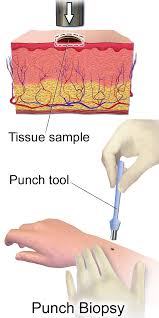
You need a biopsy at times to conclusively detect the problem. In some cases, your skin condition may have signs that mimic other conditions. So, the skin biopsy can conclusively detect the exact nature of the problem. The sample of your abnormal skin patch is tested to know the exact cause of the issue.
Treating Plaque Psoriasis
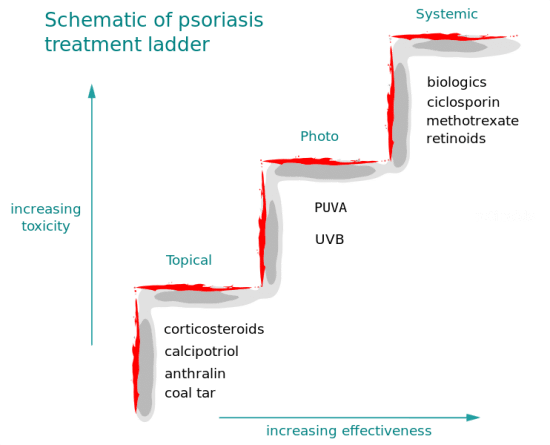
Your doctor can choose a treatment based on the severity of your skin problem, and the areas affected. In the traditional approach, your healthcare provider can start with the mildest form of treatment. If the approach does not show any results, the doctor can choose other stronger methods as per necessity. So, the treatment options are:
Topical Treatments
It is a treatment option ideal for the mild form of plaque psoriasis. The treatment is mostly used alone and not in combination with other options. You need to apply the creams/ointment on your directly for getting relief. For severe cases, your doctor combines creams with oral medication or light therapy. So, the treatment options include:
Topical Corticosteroids
Many doctors suggest the drugs to treat the mild to moderate form of plaque psoriasis. It is the commonly prescribed medication to reduce inflammation and itching. In most cases, the treatment combined with other treatments to offer relief. Your dermatologist prescribes a mild form of corticosteroids ointments for sensitive areas like your face as well as skin folds. The mild form of the cream can also treat widespread patched of the damaged skin due to plaque psoriasis.
A stronger dose of topical corticosteroid ointment can treat small but tough areas of your skin. It is mostly selected for the less sensitive area. But, the long term use of strong corticosteroid can cause harm to your skin. It can thin your skin. The topical corticosteroid stops working after some time. Your doctor mostly suggests using it for a short period to see the desired effects. So, you need to use it for a short-term even during a flare.
Vitamin D Analogues
It is the synthetic form of vitamin D that has the ability to slow skin cell growth. Your doctor can prescribe the solution or cream containing vitamin D analogue. It can treat the mild to moderate forms of skin disorder and offer relief. So, it is mostly used in combination with other treatment option for best results.
Anthralin
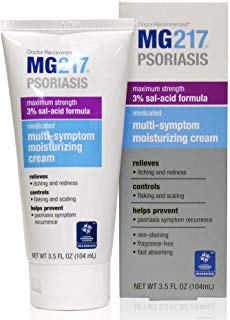
It is another medication that helps slow down skin growth. Anthralin can aid in removing the scales and make your skin smoother. But, it can irritate your skin. It also stains anything it touches. So, you need to apply it for a short time. Anthralin is washed after some time.
Topical Retinoids
It is vitamin A derivatives, which reduces the inflammation occurring due to plaque psoriasis. But, you can suffer side effects like skin irritation. It can also cause sensitivity to sunlight. So, people using the medication need to apply sunscreen before going outside.
Calcineurin Inhibitors
It reduces the plaque buildup on the skin. Calcineurin inhibitors can also reduce inflammation and offer relief from itching and irritation. It is mostly used in areas having thin skin (like the skin around your eyes). So, you can apply it to areas where steroid creams/retinoids can cause irritation or other harmful effects. But, you cannot use it for a long time or use it continuously due to its adverse side effects. Long-Term use of calcineurin inhibitors can increase your chances of developing lymphoma and skin cancer.
Salicylic Acid
Salicylic acid is a famous product that can help overcome skin problems. It is available over-the-counter without any prescription. It promotes the sloughing of dead skin cells. So, it reduces scaling. In most cases, your dermatologist combines salicylic acid with topical corticosteroids or other methods for best results. The combined treatment increases effectiveness. You have several skin care products with salicylic acid as the main ingredient. It can manage the skin disorder.
Coal Tar
Coal tar derived from coal reduces the scaling, itching, and inflammation associated with the plaque psoriasis. But, the actual coal tar applied directly on your skin can trigger irritation. It is also messy as it stains your clothes or bedding when it comes in contact. The strong odor can also make you wary of the product. So, you can use OTC (over-the-counter) shampoos, creams or oil containing coal tar. But, it is not advised for pregnant women due to its side effects.
Moisturizers
While moisturizers cannot heal the plaque psoriasis, it can alleviate itching. The skin disorder can cause scaling and dryness. The moisturizer can offer better relief from itching as it has an ointment base. So, it is lighter than creams as well as a lotion. For better results, you need to apply it on your skin immediately after shower or bath. It locks in the moisture and overcomes the dryness.
Light Therapy/Phototherapy
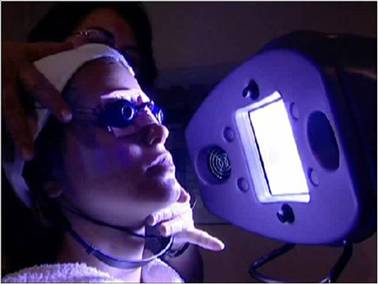
As the name suggests, it uses natural or artificial light to offer relief from the skin disorder. You can either opt for the simple and easy form of phototherapy with natural sunlight or artificial ultraviolet light to get relief from the problem. Your doctor can suggest it alone or in combination with other medication to get the desired results.
Natural Sunlight
It is the simplest form of therapy to deal with the skin disorder. The exposure to the ultraviolet rays in sunlight can reduce the development of skin cells. So, it reduces the scaling and inflammation associated with the problem. You need to expose the affected skin to small amounts of sunlight every day. It can improve the plaque psoriasis to an extent. But, you need to maintain caution as overexposure can worsen the symptoms and result in severe skin damage. You need to get the advice from your doctor about the safest method to use natural sunlight for treating a skin disorder.
UVB Phototherapy
It is suggested for mild to moderate plaque psoriasis. Controlled doses of Ultraviolet (UV)-B light from the artificial source can treat skin disorders. UVB phototherapy or broadband UVB can treat single patches or widespread skin patches. It is also effective in treating the condition that is resistant to topical treatments.
Narrow Band UVB Phototherapy
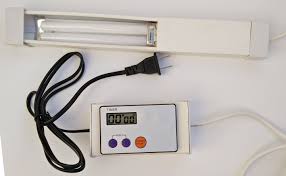
It is a newer type of treatment effective for the skin disorder. The treatment option is more effective than UVB phototherapy treatment. You need the administration for at least two to three times a week until you see improvement in your skin condition. You need to undergo a weekly session to maintain it.
Goeckerman Therapy
In some cases, doctors combine UVB treatment along with coal tar treatment to increase efficiency. It is referred to as Goeckerman therapy. The combination of two therapies offers effective results compared to just one method. It is because using coal tar makes your skin more receptive to ultraviolet B (UVB) light.
PUVA (Psoralen plus ultraviolet A)
It is a technique that makes your skin more responsive to phototherapy. It is a form of photochemotherapy, which uses psoralen (a light-sensitizing medication) before exposing your skin to UVA light. The medication makes your skin more receptive to UVA exposure. So, UVA light penetrates deep into your skin compared to UVB light.
Excimer Laser
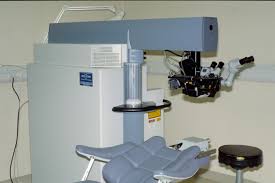
It is the light therapy option your doctor selects for mild to moderate form of plaque psoriasis. The therapy only treats the affected skin without causing any harm to your healthy skin. During the therapy, your affected skin gets the controlled beam of UVB light. So, it controls the inflammation and scaling associated with the skin problem. You need to undergo less session of excimer laser therapy compared to the traditional phototherapy session. It is because the therapy uses more powerful UVB light.
Systematic Treatment Using Oral/Injected Medications
For severe plaque psoriasis, your doctor can adopt a different approach to manage the condition. In most cases, oral or injected drugs can provide relief. The treatment also known as systematic treatment is effective when other treatment options fail to offer relief. But, the treatment option has severe side effects. So, it is used only for a brief period. It is alternated with other forms of treatment to avoid lasting adverse effects. Here are the options available:
Retinoids
It is related to Vitamin A and is quite effective in managing severe plaque psoriasis. The group of drugs is prescribed when you fail to respond to other therapies.
Methotrexate
It is an oral medication that can reduce the production of skin cells. The medication is also effective in suppressing inflammation occurring due to the skin disorder. The drugs can also slow down the progression of the condition in some people. But, it is not used for a long period due to its serious side effects.
Cyclosporine
It is the medication that has similar effects of methotrexate. Irrespective of its effectiveness, it is prescribed only for a short duration of time. The drugs suppress your immune system to manage skin disorder. Like other immunosuppressant drugs, it puts you at risk of health problems like infection, cancer, kidney problem, and high blood pressure. So, the drug is not an ideal choice for long-term therapy or higher doses.
Biologics
It is the drugs that can alter your immune system and offer relief from the symptoms of plaque psoriasis. The approved drugs can treat mild to severe cases of skin disorder. The injectable drugs often provide relief to people who fail to respond to traditional treatment options or suffer from psoriatic arthritis. Since biologics have a strong effect on the immune system, your doctor prescribes it with caution. To avoid life-threatening infections, your doctor suggests regular screening for different problems, including tuberculosis.
Remission For Plaque Psoriasis
How do you know that you have healed from the skin disorder? Since you cannot completely cure the problem, you can get relief from the symptoms and experience long periods of remission with proper treatment. Most people respond to the standard treatment offered by medical professionals. Your skin can experience psoriasis-free periods with guided treatment. Once you start to heal, your skin returns to its normal thickness. You see the flakiness fading away and the shedding will slow down. It will eliminate the redness in the affected area.
If you do not respond to the treatment, then never stop it by yourself. Always consult your doctor before stopping or switching the treatment for the condition. Although the condition is not contagious, anyone can suffer from the problem. You need to make yourself aware of the problem to take necessary action. Plaque psoriasis needs visibility among the public to eradicate the myths surrounding it and deal with it better.
Conclusion
Plaque psoriasis has no cure. With proper medical attention, you can manage the condition effectively. But, the problem can cause mental stress. In severe cases of the disease, you feel embarrassed to meet people due to the disease covering large areas of the body. When it affects the places readily seen by people, you can become self-conscious. The persistent and ongoing challenges of the different treatment options available can also put an additional burden on you. Therefore, you need to talk to your doctor about the concerns and get valuable guidance. With the proper information, you can control the problem and lead a happy life.
View Article Sources
